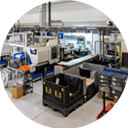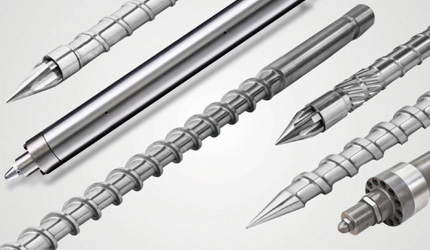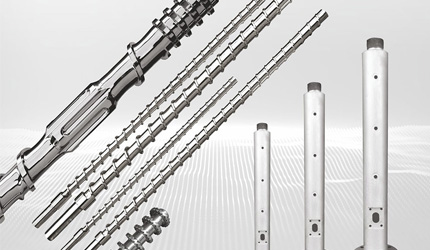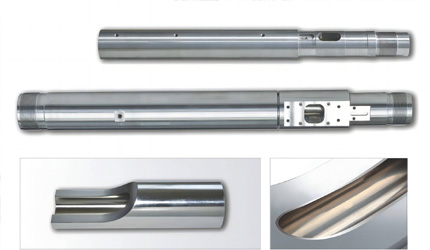Why Screw and Barrel Are Crucial in Injection Molding Machine Operations
Why Screw and Barrel Are Crucial in Injection Molding Machine Operations
Injection Molding Machine Basics: Role of Screw and Barrel
The screw and barrel system works as the central part of an injection molding machine. They manage how raw polymer pellets get heated, blended, and sent into the mold with careful accuracy. Their results decide the standard of finished parts. They also shape power use, work rate, and machine life time.
What exactly are the screw and barrel in an injection molding machine?
In essence, the screw is a rotating helical component that moves plastic pellets from the hopper, through the barrel, and into the mold. As the screw rotates, it generates heat and friction, melting the plastic into a liquid state. The barrel, which houses the screw, ensures that this transformation happens smoothly, controlling the temperature through built-in heaters and cooling channels.
How the screw-and-barrel system fits into the entire injection unit
In an injection molding machine, the screw and barrel build the plasticizing unit. This unit is placed before the injection nozzle. Their task is to make sure the liquid polymer reaches the right thickness and heat before entering the mold area. The system links raw input to mold fill. So, it holds a major spot in the output.
Why this subsystem deserves attention in production operations
Many production challenges—such as inconsistent part weight, color streaks, or extended cycle times—often trace back to improper screw or barrel design. Investing in high-precision, wear-resistant components can dramatically improve product yield, reduce scrap rates, and extend machine lifespan.
Key Functions of the Screw in Injection Molding Operations
The injection molding screw performs three essential functions: conveying, melting, and metering. Each section of the screw is engineered for specific material behavior.
Conveying raw plastic pellets into the barrel
The feed zone begins the process, drawing plastic pellets from the hopper and transporting them forward. A properly designed feed zone ensures consistent throughput and minimizes the risk of material starvation or bridging.
Melting, mixing, and homogenising – how screw geometry drives quality
In the compression zone, screw geometry—its flight depth, pitch, and compression ratio—creates frictional heat that melts the plastic uniformly. The screw must balance shear energy and temperature to prevent material degradation.
Metering and injection: the screw’s role in shot-to-shot consistency
The final function of the screw is metering, where it ensures the consistent delivery of the molten polymer into the mold. The metering zone is designed to deliver a precise amount of material at the correct pressure and temperature, which directly affects part weight and mold filling consistency.
Why the Barrel Matters: Heat, Wear, and Performance in Injection Molding
The barrel of an injection molding machine is more than a metal tube—it’s a precisely engineered housing that must withstand intense temperature and pressure cycles while maintaining dimensional accuracy.
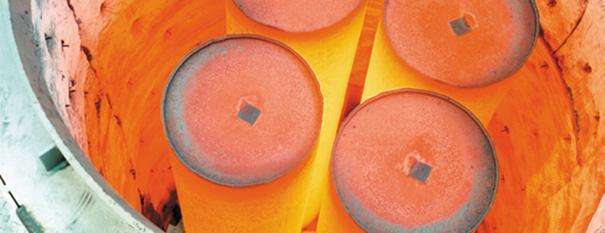
Thermal management: barrel heating, cooling, and melt uniformity
The barrel controls the temperature gradient of the material as it travels through the screw, allowing the melt to maintain consistent viscosity for injection. Without precise thermal control, variations in melt temperature could cause defects like inconsistent part color or physical properties. A high-quality barrel is designed with multi-zone temperature control, which is essential for processing materials with varying heat requirements.
Wear, corrosion, and material fatigue of barrel interiors in high-cycle use.
Over time, friction and chemical reactions can erode the barrel’s inner wall, enlarging clearances and reducing precision. To combat this, CHUANGRI SCREW’s Bimetallic Barrel integrates a tungsten-carbide-reinforced liner that delivers hardness up to HRC 62 and corrosion resistance even under abrasive polymer use.
Selecting barrel materials and design for long-term injection operation
Choosing the right barrel material is essential for ensuring long-lasting performance. The inner barrel surface must be able to withstand high temperatures, wear, and corrosive environments, especially when processing materials like PVC or engineering plastics. For general-purpose plastics, a nitrided barrel is often the best option, as it provides good wear resistance at an affordable price.
How Screw & Barrel Affect Cost, Efficiency, and Defect Rates in Injection Moulding
The screw and barrel group directly shapes the making of money and quality points in injection molding.
Impact on cycle time, throughput, and energy consumption
A well-matched screw and barrel lower rubbing loss. They let faster plasticizing. This brings shorter cycles. It raises parts per hour. Energy cuts come from better heat pass and lower motor pull.
Relation to part quality – defects such as short shots, flow lines, and colour variation
Quality problems like short shots, flow lines, or color streaking often start from uneven melt flow or heat changes. Screw and barrel plan determine how well the material mixes and reaches the mold. CHUANGRI SCREW’s Bimetallic Injection Molding Screw keeps even melt flow. It stops usual flaws. It raises part steadiness.
Maintenance and lifecycle cost of the screw and barrel sub-system
High-standard screws and barrels may cost more at first. But they bring long-term savings. They cut care times. They add to the full machine life.
Screw and Barrel Selection: Matching to Material, Machine, and Application
Choosing the right screw-and-barrel setup needs matching plan details to resin ways, machine power, and part shape.
Choosing screw and barrel combination based on resin type (commodity, engineering plastics)
-
PP, PE, ABS: Nitrided Screw + Nitrided Barrel – good cost for usual plastics.
-
PC, PA, POM: Bimetallic Screw + Bimetallic Barrel – for steady work under high cut.
-
Glass-fiber composites: Solid Carbide Screw + Tungsten-Carbide Barrel – for top scrape fight.
Design parameters: L/D ratio, compression ratio, screw pitch, barrel bore, and length
| Parameter | Function | Typical Range |
| L/D Ratio | Melting capacity & residence time | 20 – 25 |
| Compression Ratio | Melt homogenization | 2.5 – 3.5 |
| Screw Pitch | Feeding efficiency | Varies with resin type |
| Bore & Clearance | Dimensional accuracy | ≤ 0.02 mm |
CHUANGRI SCREW engineers change these sizes with modern CAD and CNC tools. This makes sure to fit with any kind of injection machine.
Upgrades and replacement options: barrier screws, wear-resistant barrels for filled plastics. For makers who want to update current machines, CHUANGRI SCREW gives barrier screws and tough barrels for fiber-filled plastics. These changes raise the melt standard and speed. They skip the full machine change.
Introducing CHUANGRI SCREW – High-Precision Screws & Barrels for Injection Molding Machines
At CHUANGRI SCREW, we focus on giving high-accuracy screws and barrels. These boost the work speed and trust of injection molding machines. With over 30 years of experience in making and design, we supply items that meet top quality, strength, and workmanship.
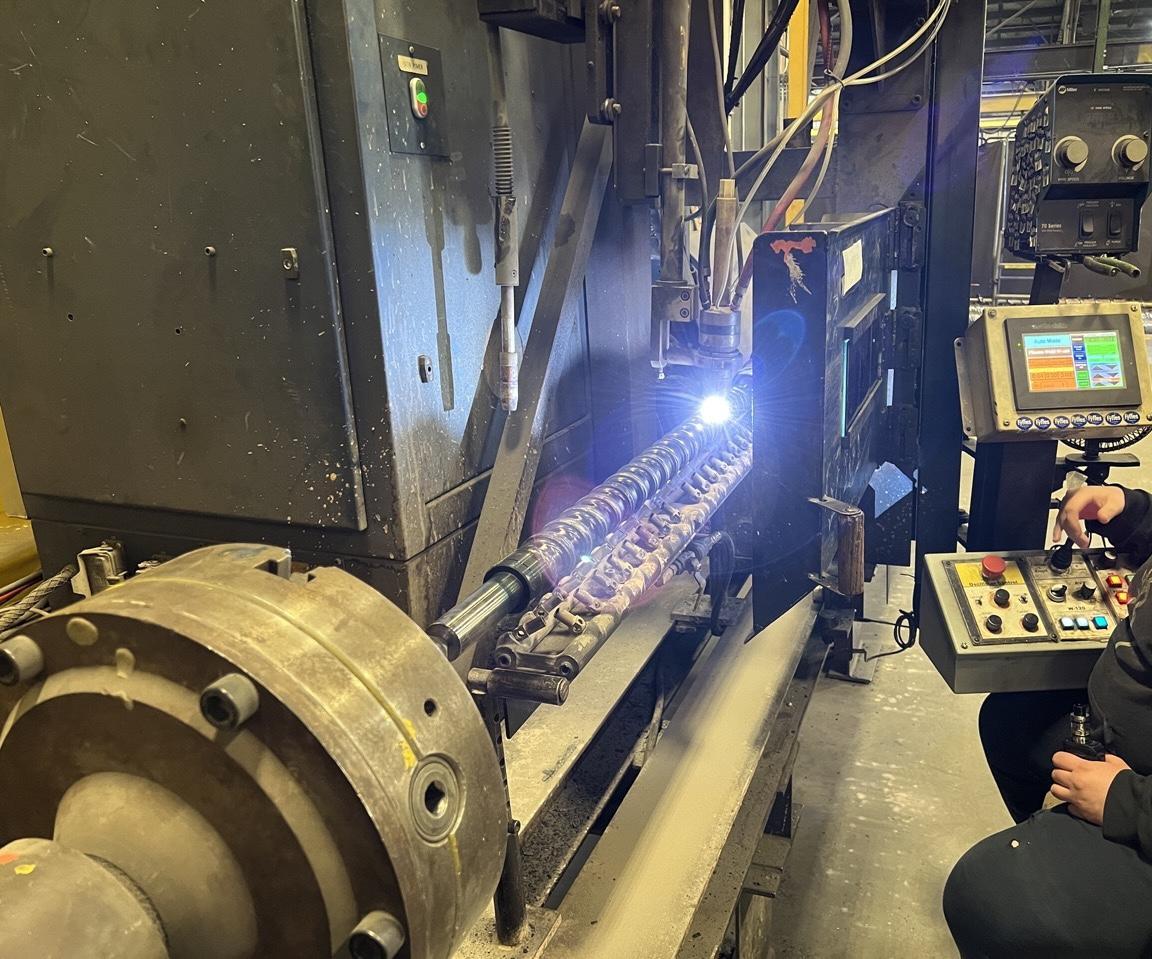
Key product offerings: customised screws, precision barrels, engineered coatings
Our items include:
-
Bimetallic Injection Molding Screw and Barrel: These fit high-filler, high-heat materials. They give strong hardness (HRC 58–62) and rust resistance. The bimetallic layer adds to the use time. It keeps strength in hard-to-make spots.
-
Solid Carbide Screw: Made for reinforced plastics. This screw offers great wear resistance and smooth melt flow. It suits materials with high glass fiber content (up to 75%).
-
Nitrided Injection Molding Barrel: This low-cost pick works for general plastics. It mixes fine heat control and wear fight. It serves as a flexible choice for usual tasks.
Competitive advantages: material selection, machining accuracy, and after-sales service
What makes CHUANGRI SCREW different from others is our drive to produce the best work in each step. From raw pick to end check of each screw and barrel, we make sure every item meets strict quality rules.
-
Material Selection: We use only the best alloys like 38CrMoAlA, H13, and SKD61. This brings better work and a long life.
-
Machining Accuracy: Our exact CNC machining keeps tight limits and the best fit between screws and barrels. This cuts wear. It boosts molding evenness.
-
After-Sales Service: We supply full support after the purchase. This covers tech advice, fix help, and quick replacement. It keeps you making smooth and fast.
At CHUANGRI SCREW, we know the value of cutting stop time and raising production speed. Our fit solutions help buyers add output, better part standard, and lower run costs.
How our solution supports improved productivity, quality, and cost control for your molding operations
Whether you make car parts, medical items, or user electronics, CHUANGRI SCREW supplies custom fits for your injection molding needs. Our high-accuracy items cut cycle times. They stop flaws. They lengthen machine life. In the end, they help companies gain more profit with higher speed and lower care costs. We work closely with buyers. This makes sure our screws and barrels fit perfectly in their lines. They offer better work and less wear. With CHUANGRI SCREW, makers trust the steady and fast injection steps. This ensures a clear way from raw material to the end product.
FAQ: Common Questions About Screw and Barrel in Injection Moulding Machines
Q1: How long do a screw and barrel last in injection moulding?
A: Service life changes by materials and work settings. Nitrided parts usually last 2–3 years. But CHUANGRI SCREW bimetallic screws and barrels can last over 5–8 years. This comes from better wear fight.
Q2: How can I select the right screw and barrel for my molding application?
A: Check your resin type, filler amount, and output aim. CHUANGRI SCREW gives help to match the shape and alloy with certain making wants for the best melt stability.
Q3: Are bimetallic barrels better than nitrided ones for engineering plastics?
A: Yes. Bimetallic barrels give higher hardness (HRC 58–62) and rust guard. This makes them perfect for high-heat or fiber-filled resins.
Q4: Can I upgrade an existing machine with a new screw design?
A: Absolutely. CHUANGRI SCREW helps change the barrier and mixing screw plans. These better melt standard without a full machine swap.
Q5: Which brands are recognized for reliable injection molding screws and barrels?
A: Globally, CHUANGRI SCREW wins trust from makers in over 50 countries. It stands for exact design, custom plans, and lasting work.

